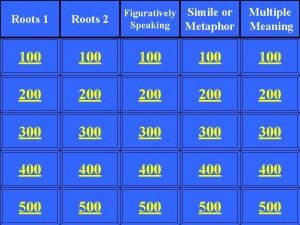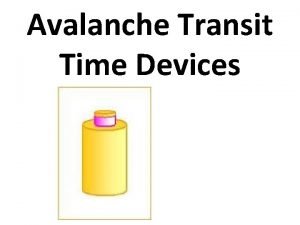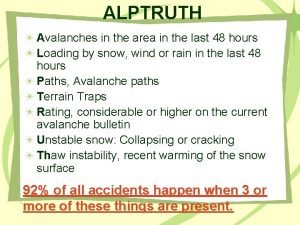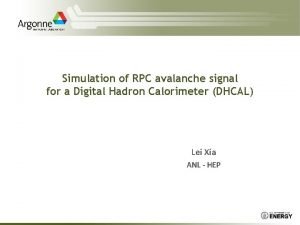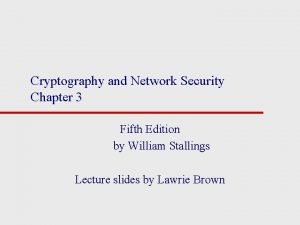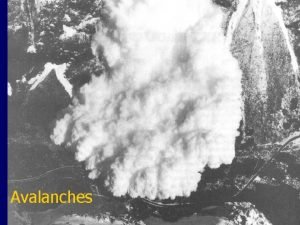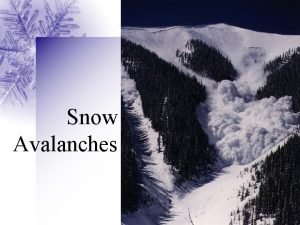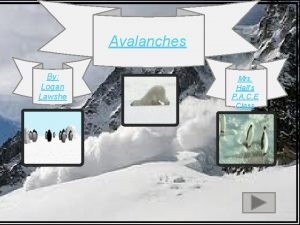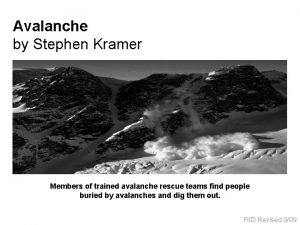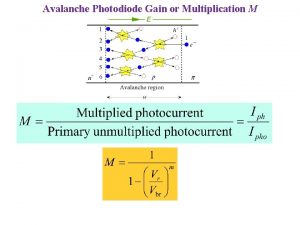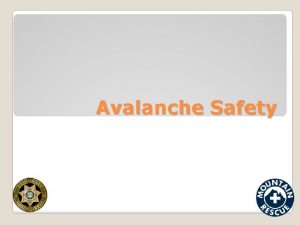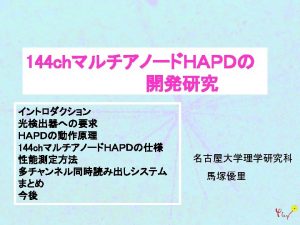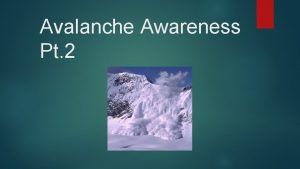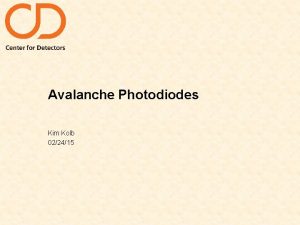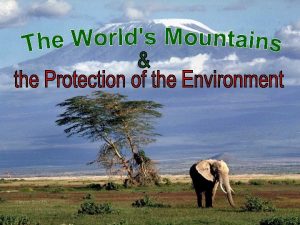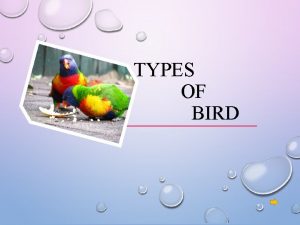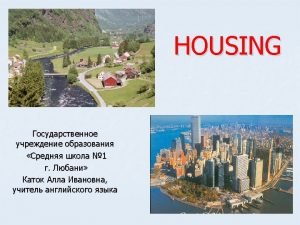Level 1 Review Level I Review Avalanche Types












- Slides: 12

Level 1 Review

Level I Review Avalanche Types and Characteristics 1) What are the main characteristics of a slab avalanche? a) Large b) Well defined bed surface c) Dry snow d) Wet snow e) Crown (Fracture Line) f) Tear drop shape g) Flanks h) Cohesive snow i) Un-cohesive snow j) Easier to predict k) Harder to predict

Level I Review 2) What are the main characteristics of a loosesnow avalanche? a) Large b) Well defined bed surface c) Dry snow d) Wet snow e) Crown (Fracture Line) f) Tear drop shape g) Flanks h) Cohesive snow i) Noncohesive snow j) Easier to predict k) Harder to predict

Level I Review 3) An avalanche with a large cloud of snow suspended in the air is called a “powder avalanche. ” True False 4) Describe the destructive potential of a Class 2 Avalanche using the Canadian classification system. 5) Describe the size of a Size 2 avalanche using the American classification system.

Level I Review Avalanche Terrain 6) What are the two main terrain factors that influence where avalanches might start? 7) Some common trigger points are: a) Convex areas b) Shallow snow c) Scattered trees or rocks d) Below cornices 8) What are three signs that avalanches have run in the past? 9) What are terrain traps? Give two examples.

Level I Review Creation and Metamorphism of the Mountain Snowpack 10) Atmospheric snow falls from the sky in various shapes and sizes. True False 11) Differing snow types and weather conditions cause the snowpack to form in layers. True False

Level I Review 12) Circle “M” to indicate a maritime climate characteristic and “C” to indicate a continental climate characteristic: M C High precipitation rates M C Strong pre-storm winds M C Cold temperatures M C Shallow variable snowpack M C Strong, uniform, snowpack with mostly rounded grains M C Avalanches often occur without significant storms M C Avalanche danger rises quickly and falls quickly

Level I Review 13) The main “direct weather” factors that cause layers at or near the snowpack surface to change characteristics are: a) Wind b) Humidity c) Surface hoar d) Sun e) Riming f) Rain g) Temperature

Level I Review 14) Once layers are buried more deeply, weather affects them indirectly and faceting or rounding are the main types of metamorphism. Circle “F” for faceting or “R” for rounding to indicate which process is more likely to occur due to the following factors: F R Shallow snowpack F R Warm air temperatures F R Deep snowpack F R Cold air temperatures

Level I Review Avalanche Danger and Danger Factors 15) Three conditions are required for avalanche danger to exist. They are: a) Unstable snow b) High altitudes c) Poor weather d) Avalanche terrain e) People, equipment, or facilities f) Warm temperatures 16) List the five avalanche danger rating categories.

Level I Review 17) Factors that influence avalanche danger or indicate that danger may exist are recorded in three data classes. They are weather, snowpack, and avalanche activity. In each of these data classes there a number of information categories. Choosing from the list below right, place the information categories under the correct data class heading on the left. Data Class Weather Snowpack Avalanche Activity Information Categories Precipitation When did they happen? Layers Wind What triggers? Temperature Snow cover Instability signs Solar radiation How do they look? Bonding

Level I Review 18) We make observations in each information category to help make decisions about avalanche danger. When we see a critical value we often call it a “red flag”. List two important observations we make in each of the following information categories and red flag values that would indicate avalanche danger. An example is provided to get you started: Information Category Precipitation Observations Intensity Accumulation Red Flags > 3 cm/hour > 30 cm in 12 hours
 The avalanche devoured everything in its path
The avalanche devoured everything in its path 100 similes
100 similes Avalanche transit time devices
Avalanche transit time devices Alptruth
Alptruth Avalanche photodiode
Avalanche photodiode Avalanche rpc
Avalanche rpc Avalanche effect in des with example
Avalanche effect in des with example Avalanche
Avalanche Vcompanion
Vcompanion Youtube clip
Youtube clip Chapter review motion part a vocabulary review answer key
Chapter review motion part a vocabulary review answer key Ap gov review final exam review
Ap gov review final exam review Narrative review vs systematic review
Narrative review vs systematic review

